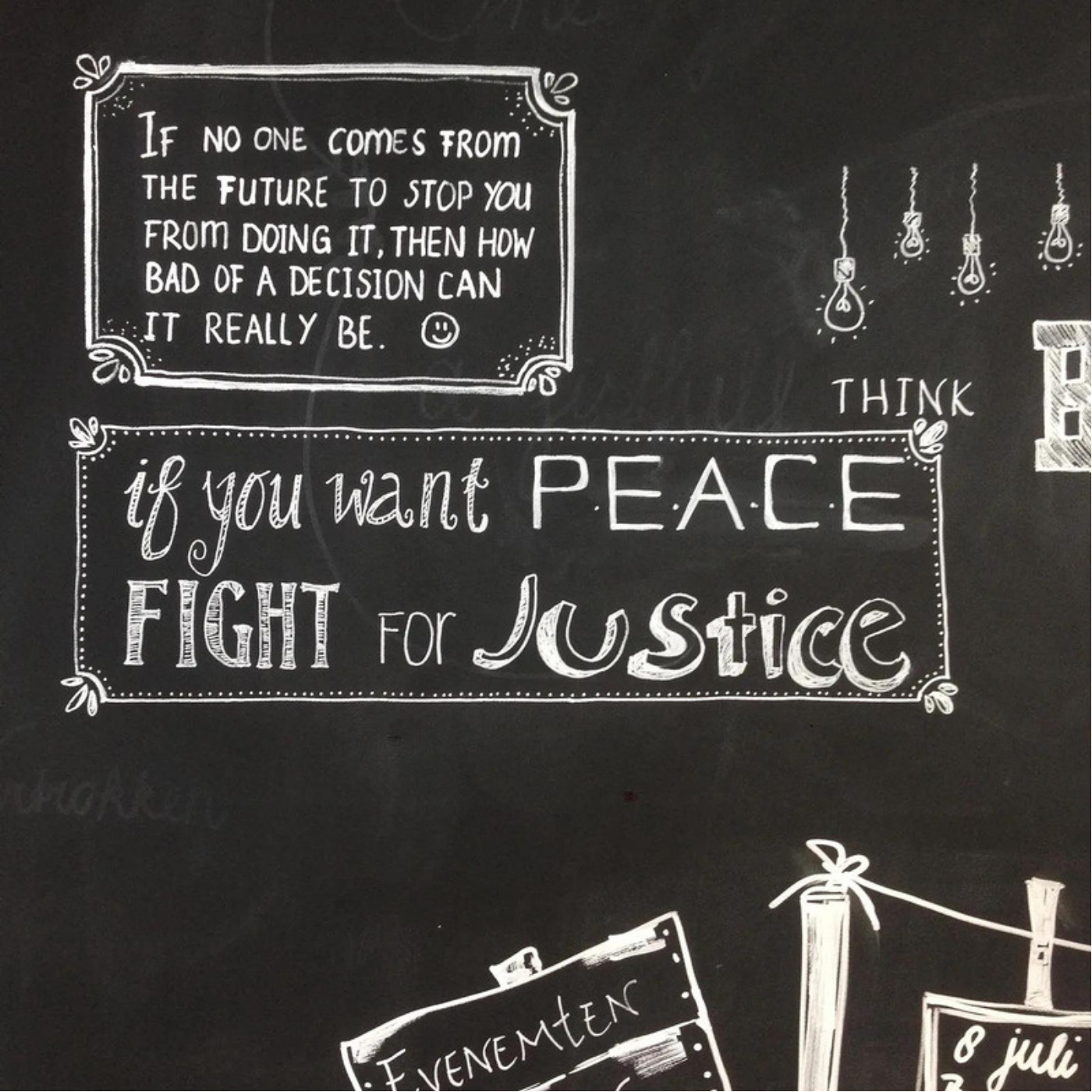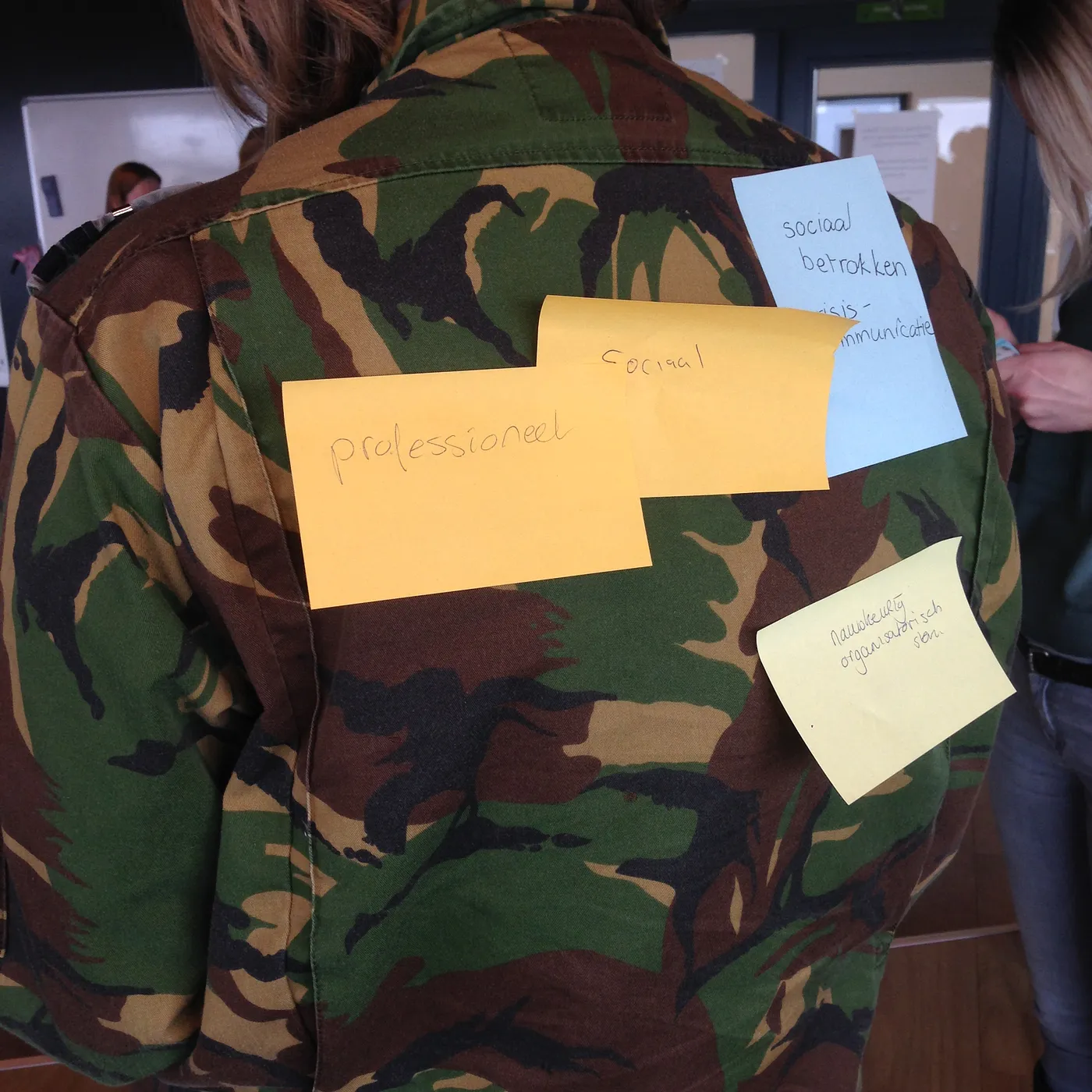The Ministry of Peace: How Reframing Your Brand’s Purpose Helps to Find Inroads to Organizational Change
As a large organisation struggling to stay relevant and to find purpose, you can get caught up in endless introspection, reorientation and discussion, which swallows up vast amounts of energy and headspace. To help kick start new ideas, a brand reframing exercise can yield big, fresh ideas in a short amount of time. It challenges your initial vision, rises assumptions and helps you to look at your brand from a whole new perspective. The reframed purpose can then form the basis of a (fictional) brand strategy.
What would the new brand purpose mean for the products and services you offer? What would your strategic partnerships, communications, HR policies or events look like? Using brand thinking, you can find innovative new services or customer experiences.
A case in point: I recently had the pleasure of working with the Dutch Ministry of Defence, an organisation over 100 years old, to reframe their brand during a two day workshop session. This is the story of that unlikely collaboration…
On a cold Dutch spring morning two years ago, I sat down with Elanor O’Sullivan, a Colonel at the Ministry of Defence and head of the Airforce Innovation Center, for coffee.
Colonel O’Sullivan does not look like one would expect of a soldier: not overtly muscular, not loud or intimidating. Rather, she looked to me as fit and light as a marathon runner, with a marathon runner’s mental discipline and sharp eyes that lock you into an immediate intimacy. An obvious introvert, she considered every word before it was wasted on the air.
Colonel Elanor O’Sullivan leads the Airforce Innovation Centre
In short, well weighed sentences, she laid out her ideas for change within the military for more creative thinking and more space for different opinions and different talents. Having been active in several operations abroad, she advocated for a military that builds peace in more ways than just military interventions.
It struck me that her mission for change was one of the toughest ones I had ever heard any changemaker voice.
A tough case for change
To encourage more creative thinking and collaboration within the military’s teams and divisions would challenge the set-in-stone hierarchy of ranks, where one listens to a superior without question. Ranks are meant to safeguard order and prevent casualties, but are at odds with innovation creativity and experiment.
The military educational process is built to weed out anyone who thinks differently and disobeys orders.
To talk about peace in an organisation that is in love with its fighter jets, helicopters, drones, tanks, jeeps, submarines, well…you can count on getting some stiff feedback at best.
Allowing a few moments for her words to sink in, the Colonel asked me what I could do to support her mission for change. Though overwhelmed by the magnitude of her challenge, I did not hesitate for a second. I proposed to reframe the Ministry of Defense as the Ministry of Peace and Justice. To my surprise, she thought this was a marvelous idea.
A new world of possibilities
A Ministry of Peace and Justice would have the mission to promote peace and justice in the Netherlands and consequently, globally. Its name inherently would be its purpose. Such a reframe would greatly influence the products and services the ministry and the military would provide. It would attract a more diverse type of talent; guys and girls who not just survive hard physical training, but can who can develop technologies, build understanding between cultures and design systems for behavioural change.
It would require different partnerships -not just with other armies but also with NGO’sand social enterprises. They would research and develop entirely different supporting materials than tanks and guns.
A reframe of this magnitude opens up an entire world of possibilities.
What type of events would the Ministry of Peace organise, how would they communicate , about what and through which channels?
To be clear, neither the Colonel nor I were under the impression that an actual name change was within the realm of possibility. But it was not too outlandish either. After all, the Dutch Ministry of Defence has had many names in the past, and each reflected the mindset and morals of their day. Originally dubbed the Ministry of War, it turned into the Ministry of Defence after the Second World War. The possibility of extending this re-naming trend, from war to defence and from defence to peace, was very exciting.
As exciting as the prospect of an actual renaming was, we stepped off our cloud and focused on a first step. Colonel O’Sullivan asked me to organise a brand camp (our signature brand thinking workshop) with her team to explore what a brand reframe of the Ministry of Peace could bring them. But the real world intervened.
When a Dutch passenger plane on its way to Malaysia was shot down above war torn Ukraine, the Dutch Air Force was responsible for repatriating the bodies of over 150 victims to the Netherlands. Colonel O’Sullivan and her team were professionally and emotionally engaged elsewhere. We put our plans on hold and waited.
Consider yourself kickstarted
Over a year later, I was sitting behind my desk in Nairobi, when I received a call from the Colonel’s right hand Liesbeth. I was in the middle of my kickstarter campaign for the Branding Toolkit for Changemakers, and it took me a while to grasp what Liesbeth was offering me. “The Ministry will donate to my crowdfunding campaign?” I asked incredulously. Liesbeth pointed out that I offered workshops as rewards for backing the campaign, so they saw an opportunity to do good as well as reignite the idea for the brand reframing workshop. “It’s a deal”, I muttered.
In March 2016, I walked up the stairs to the Air Force innovation centre in Breda carrying my workshop materials, cleared security, and took the elevator upstairs. The walls of the innovation centre were covered in chalkboard paint and the desks were whiteboard tables. A line of visualisations of previous guest sessions included quotes by Susan Cain and Daan Roosegaarde. It felt strangely foreign and familiar to find such a setting at a military location.
Brand audience: The ‘Enemy’
Over the next two days, four teams of mixed rank and expertise worked on concepts for their own Ministry of the future. The head of press, with many stripes on his shoulder, listened with interest to the opinions of a new intern. A member of the innovation team worked with a senior supervisor of an air force base.
Ice breaker exercise: what do you want the Ministry to be recognised for?
We had many unexpected moments of humor, intended or unintended. While mapping out their new brand’s audiences, some of the reframe concepts needed to appeal to hackers and programmers, while one prominently featured the brand audience as ‘ENEMY’, a first in my eleven years working in branding.
At the end of the two day session, three teams pitched their own brand reframes*. While a two day workshop is not enough to cause an immediate radical change in an entire ministry, the workshop uncovered valuable and surprising insights for a team that rarely has the luxury to think beyond the next day or next emergency. Armed with new ideas and the skills to help other think differently, the team is looking to cause a disturbance in the way the Ministry and its military force operates. With terror attacks across Europe becoming a ‘new normal’, these new ways of thinking and working are more crucial than ever before.


